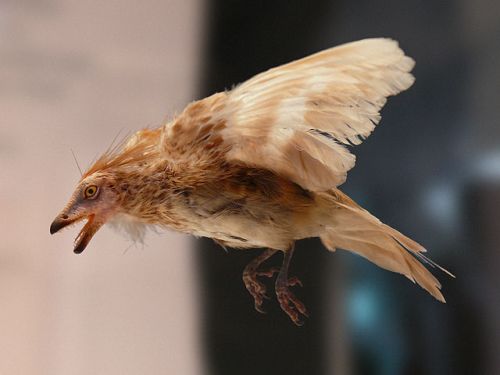
| Palaeos |  |
Aves |
| Vertebrates | Index |
| Page Back | Unit Home | Unit Dendrogram | Unit References | Taxon Index | Page Next |
| Unit Back | Vertebrates Home | Vertebrate Dendrograms | Vertebrate References | Glossary | Unit Next |
|
Abbreviated Dendrogram
COELUROSAURIA | AVES |--Archaeornithes `--+--Confuciusornithidae `--Ornithothoraces |--Enantiornithes `--Ornithurae |--Hesperornithiformes `--Neornithes |--Paleognathae | |--Lithornithiformes | `--Ratites `--+--GALLOANSERAE `--GRUIMORPHA |
Contents
Index |
 Reconstruction of the early Cretaceous Enantiornithe bird, Iberomesornis romerali, Barremian of Spain. Museo Nacional de Ciencias Naturales de Madrid Photo by José-Manuel Benito Álvarez, via Wikipedia, public domain |
One of the most successful of all vertebrate clades, the birds (Class Aves) are the only dinosaurians to survive the end Cretaceous mass extinction. With the mammals, they redefined the Cenozoic, making it a very different word to that of the preceeding Mesozoic era; a world dominated by active, large brained, endotherms. Yet, like the mammals, birds were around duroing the time of dinosaurs, and it was not birds in general, but only a single specialised avian lineage, the Neornithes, that went on to populate the Cenozoic. Between Neornithes ("New Birds") and their theropod ancestors however were a whole range of intermediate forms, just as within the theropoda itself there were successive stages and a range of feathered dinosaurs. In this present unit, only a few of these intermediate types are considered, along with one later eccentric lineage, the Ratites, or flightless birds (as Palaeos is revised, these will be transferred to a sepoerate unit). In following units, various groups of Neornithes are reviewed MAK120310
| Page Back | Unit Home | Page Top | Page Next |
page MAK120310